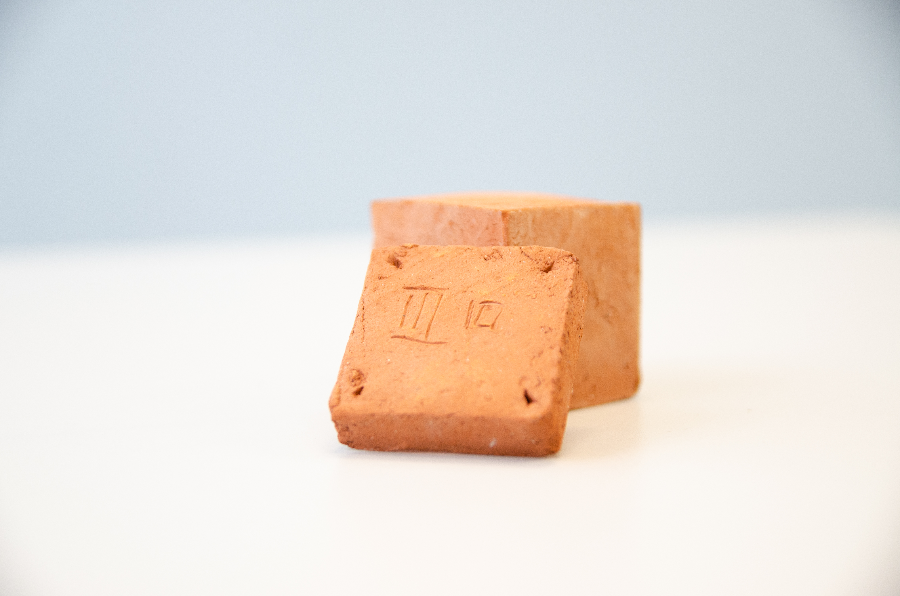Feb 11 2021
At South Ural State University, a team of researchers has optimized building materials with advantages for the environment.
 Samples of the ceramics obtained by adding sewage sludge. Image Credit: Danil Rakhimov.
Samples of the ceramics obtained by adding sewage sludge. Image Credit: Danil Rakhimov.
Sludge from water treatment plants was added by the researchers to the clay batch, achieving durable ceramics, which can be manufactured on an industrial scale. The study findings have been reported in the highly renowned Materials journal (Q1).
Both for Ecology and Construction
In the modern urban water sector, sludge forms at drinking water treatment stations due to the natural treatment of water with coagulants. The water contents of sludge, which is formed in considerable volumes of up to 5% of a station’s performance, is high. In Chelyabinsk, such sludge is transferred to sewage treatment plants; rather, it can be used effectively in the construction industry following dehydration.
The isolation of sludge will also have a favorable effect on the environment. The same dry mass, if acquired in the correct way, can be employed to enhance the properties of building materials. Researchers from South Ural State University have now proved the efficiency of this method.
Stronger and Faster
At the SUSU Institute of Architecture and Construction, researchers have been making efforts for several years to find a solution to the problem. Firstly, it is essential to resolve the problem of sludge dewatering because its impact on the properties of ceramics made from the clay charge is dependent on the separation technique.
Thanks to the collaboration between the Department of Town Planning, Engineering Networks and Systems and the Department of Building Materials and Products of the SUSU Institute of Architecture and Construction, a group of researchers headed by a Candidate of Sciences (Chemistry) Associate Professor Marina Belkanova and a Candidate of Sciences (Engineering) Aleksandr Orlov has found that 4% of the precipitate acquired after the freeze-thaw method enables reducing the firing temperature of the molded material, while also decreasing the sensitivity to drying and speeding up the process.
We have comprehensively considered the process of obtaining sludge and its use for modifying building materials. The papers that we have analyzed for our research reflect the results of only one part of the process.
Aleksandr Orlov, Candidate of Sciences (Engineering), South Ural State University
“Of course, the practice of modifying ceramics with building materials exists; in America, expanded clay is obtained this way. However, in Russia, such experiments have almost never been carried out, and work has not been done on the example of Chelyabinsk at all,” added Orlov.
Test for Flexibility
The study has been performed using the laboratory equipment from the department: a furnace, a hydraulic press, and a derivatograph. The data acquired on the enhancement of the properties of ceramics were then verified in the laboratory of the Chelyabinsk plant, which specializes in the manufacture of ceramic blocks and bricks. The outcomes of both experiments were the same.
SUSU researchers plan to use the potential findings by taking sludge from the water treatment plant situated in St. Petersburg as a basis. Preliminary data reveal that the chemical composition of the sludge coincides with that obtained in Chelyabinsk.
In case researchers obtain ceramics with enhanced properties after adding it to the clay charge, then the technique put forward by the SUSU scientists can be termed versatile for working with waste from water treatment plants across Russia.
Prospectively, enterprises that manufacture building materials might find the advent of such a technique of sludge use and waste treatment appealing. The results of this study achieved by the SUSU team will be valuable in the field of resource-saving, construction, and ecology.
Journal Reference:
Orlov, A., et al. (2021) Structural Ceramics Modified by Water Treatment Plant Sludge. Materials. doi.org/10.3390/ma13225293.